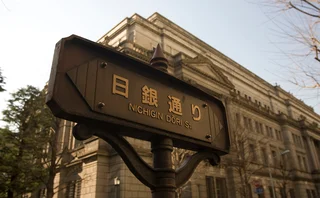

Designed to fail: terra and the limits of arbitrage
Speculative ‘attack’ exposed fundamental flaws in crypto’s algorithmic stabilisation mechanism
Perhaps the most shocking thing about the collapse of terraUSD this month was how many people saw it coming. Most crypto investors blame the stablecoin’s failure on a targeted attack by speculators, akin to how George Soros ‘broke’ the pound in 1992. While the assault was a surprise, to many in the industry the collapse was inevitable.
TerraUSD, commonly referred to as UST, and its sister token
Only users who have a paid subscription or are part of a corporate subscription are able to print or copy content.
To access these options, along with all other subscription benefits, please contact info@risk.net or view our subscription options here: http://subscriptions.risk.net/subscribe
You are currently unable to print this content. Please contact info@risk.net to find out more.
You are currently unable to copy this content. Please contact info@risk.net to find out more.
Copyright Infopro Digital Limited. All rights reserved.
As outlined in our terms and conditions, https://www.infopro-digital.com/terms-and-conditions/subscriptions/ (point 2.4), printing is limited to a single copy.
If you would like to purchase additional rights please email info@risk.net
Copyright Infopro Digital Limited. All rights reserved.
You may share this content using our article tools. As outlined in our terms and conditions, https://www.infopro-digital.com/terms-and-conditions/subscriptions/ (clause 2.4), an Authorised User may only make one copy of the materials for their own personal use. You must also comply with the restrictions in clause 2.5.
If you would like to purchase additional rights please email info@risk.net
More on Investing
Credit default swaps break through fourth wall
Fourth-trigger CDS trading ramps up as more protection sellers enter field
Growth in China snowball lookalikes sparks questions
New products include tweaks to sidestep restrictions, but some believe they don’t go far enough
Hedge funds cut BoJ bets after torrid year in yen rates
Dealers see lighter positioning after shock October election saw more than $300m of losses, compounding April’s pain
Want to be a quant? Here’s how (and how not) to get hired
Stay curious, be a team player, speak well – and don’t be big-headed
Risk Awards 2026: The winners
Citi claims top derivatives prize, lifetime award for Dennis McLaughlin, JP Morgan wins equities
The options experts who think vol selling is a broken trade
Some say the equity volatility risk premium has vanished, others say it comes and goes
For tomorrow’s quants, Python is essential; AI isn’t
Proportion of PhDs in quant teams is sliding, as employers focus on all-round skills
Roll over, SRTs: Regulators fret over capital relief trades
Banks will have to balance the appeal of capital relief against the risk of a market shutdown








